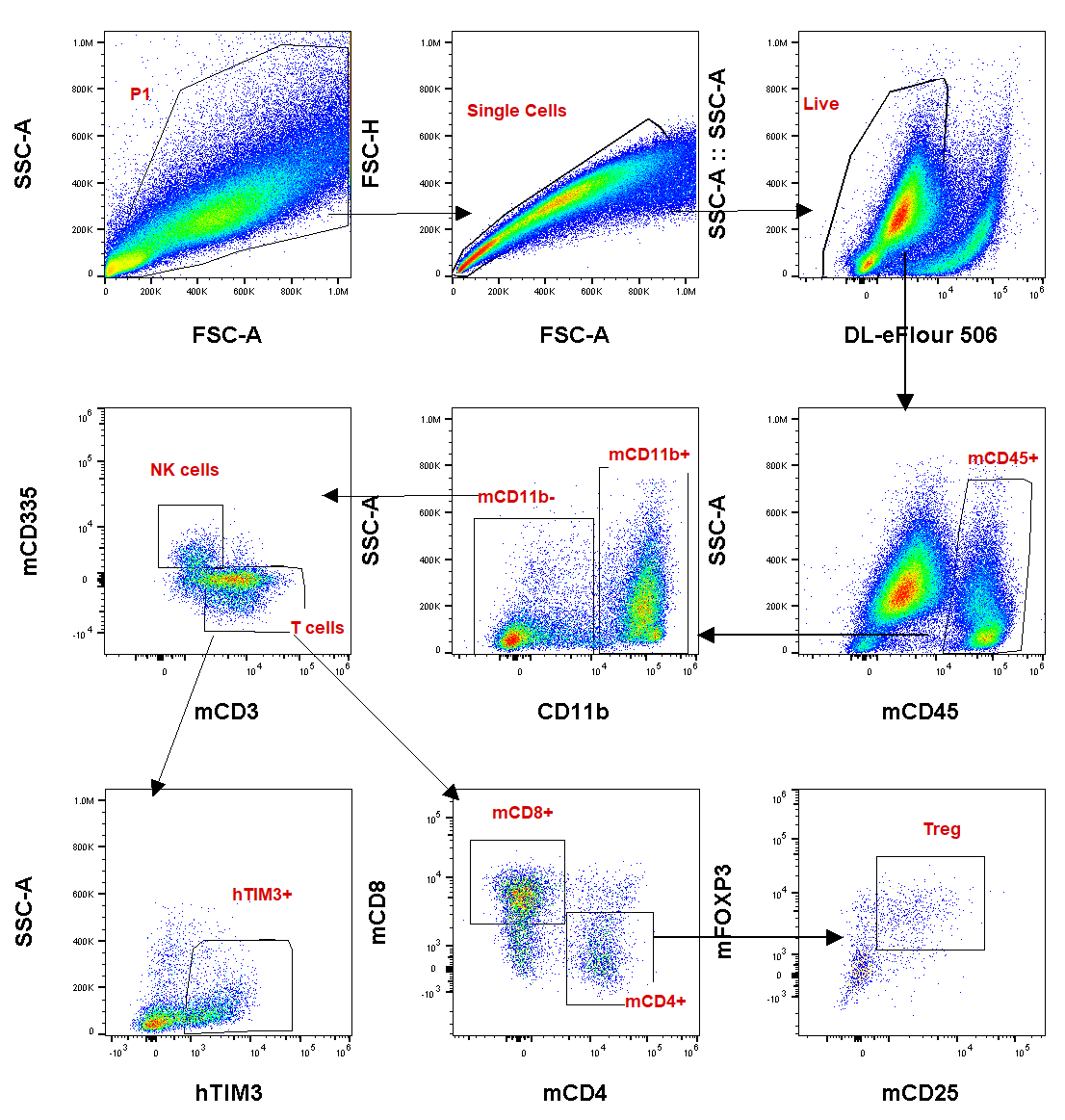Tumor Infiltrating Lymphocytes (TILs) are immune cells that exist in the tumor microenvironment. These cells primarily include cytotoxic T cells, helper T cells, regulatory T cells (Treg cells), NK cells, and macrophages.
The function of TILs encompass two primary aspects. Firstly, certain TILs cells are capable of recognizing and killing tumor cells, thereby exerting an anti-tumor effect. For example, Cytotoxic T-cells identify antigens on the surface of tumor cells and directly kill them by releasing cytotoxic molecules such as perforin and granzyme B. NK cells can also recognize and destroy tumor cells. Secondly, some immune cells within the tumor microenvironment, such as Treg cells, can suppress the immune response and promote the immune escape of tumors. Tumor-associated macrophages (TAMs) in the immune microenvironment have been found to be transformed into M2-type macrophages that promote tumor growth and metastasis, driving the development of tumors.
Experimental Case Study: Analysis of TILs in BALBc-hTIM3 mice Bearing CT26 Tumor (10-color panel)
Population | Gating Step | ||||
Total Leukocytes | Live single | mCD45+ | / | / | / |
NK Cells | Live single | mCD45+ | mCD3- | mCD335+ | / |
T Cells | Live single | mCD45+ | mCD3+ | mCD335- | / |
Th Cells | Live single | mCD45+ | mCD3+ | mCD4+ | mCD8- |
Tc Cells | Live single | mCD45+ | mCD3+ | mCD4- | mCD8+ |
Treg Cells | Live single | mCD45+ | mCD3+ | mCD4+ | mCD25+ mFOXP3+ |
Myeloid Cells | Live single | mCD45+ | mCD11b+ | / | / |
Note: | Expression of human TIM3 on T cells is assessed. | ||||

Advantages
Extensive expertise in conducting tumor TILs testing projects, coupled with the utilization of multi-functional tissue processors, allows us to efficiently process and digest tumor samples.
In addition to providing a standard TILs detection panel, GPT offers customized services that align with the unique characteristics of drugs, specific biomarkers, or distinctive cellular populations.

